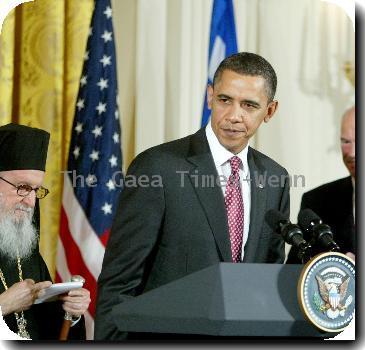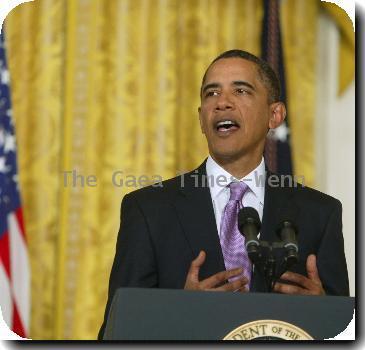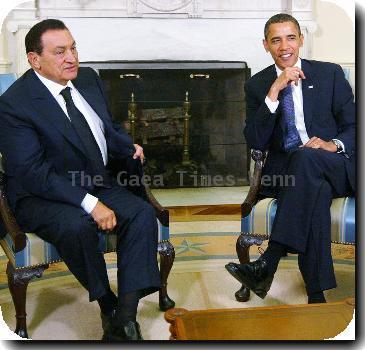Timeline of Gulf oil spill, government response
By APSaturday, May 8, 2010
Timeline of Gulf oil spill, government response
Timeline of the Gulf Coast oil spill and the response by the federal government:
Tuesday, April 20:
—Government responds to late-night report that the offshore drilling rig Deepwater Horizon had exploded and was on fire. The rig was located 45 miles southeast of Venice, La., in the Gulf of Mexico.
Wednesday, April 21:
—Several Coast Guard rescue helicopters and a rescue plane respond to the site, searching for 11 missing workers.
—Interior Department’s No. 2 official, David Hayes, goes down to New Orleans; Minerals Management Service (MMS) and Coast Guard establish operations centers near site of explosion.
Thursday, April 22:
—Deepwater Horizon oil rig sinks.
—Search-and-rescue operations includes 17 missions — 12 by air and five in the water.
—National Response Team is activated. Organization of 16 federal departments and agencies including the White House, Coast Guard, the departments of Defense, Homeland Security and Interior, and Environmental Protection Agency, among others.
—President Barack Obama convenes an Oval Office meeting to discuss ongoing response efforts.
—Remotely Operated Vehicle (ROV) with camera goes under water, confirms no visible oil flow from the well.
—Chemical dispersants, intended to break up the oil slick, are readied.
Friday, April 23:
—Authorities conduct 28 search-and-rescue operations covering about 5,300 square miles. At 5 p.m., the Coast Guard suspends the search for the missing 11.
—Rig is found upside down about quarter-mile from the blowout preventer. Oil sheen is reported, no apparent leak discovered.
—Homeland Security risk analysis says incident “poses a negligible risk to regional oil supply markets and will not cause significant national economic impacts.”
—White House press secretary Robert Gibbs is asked whether the incident might affect Obama’s plans to expand offshore drilling. “I don’t honestly think it opens up a whole new series of questions, because, you know, in all honesty I doubt this is the first accident that has happened and I doubt it will be the last,” Gibbs says.
Saturday, April 24:
—Homeland Security report on critical infrastructure says problem has “no near-term impact to regional or national crude oil or natural gas supplies.”
—Oil is found leaking from the well for the first time; pressure and rate of release are unknown.
Sunday, April 25:
—20 more vessels and 500 responders deployed.
—Oil leak is estimated at 1,000 barrels a day (42,000 gallons).
—Homeland Security report says estimated discharge rate could reach 64,000 to 110,000 barrels of oil per day if were to completely blow out.
—Five missions disperse about 13,000 gallons of chemical dispersants.
—Homeland Security report: “Current NOAA (National Oceanic and Atmospheric Administration) oil trajectories predict no oil threat to shoreline within next 72 hours.”
Monday, April 26:
—Interior Secretary Ken Salazar instructs MMS to physically inspect all deepwater rigs within two weeks, followed by physical inspections of all deepwater platforms.
—10 missions disperse roughly 15,000 additional gallons of dispersants, and 21,000 feet of containment boom are placed at the spill site.
—Homeland Security reports that attempts to activate blowout preventer valve through ROV are ineffective due to hydraulic leak on the valve.
—Interior Department begins planning for alternative interventions if the ROV valve procedure continues to be unsuccessful.
Tuesday, April 27:
—49 response vehicles are deployed — including barges, tugs, skimmers and recovery vessels
—Departments of Homeland Security and Interior announce joint investigation into spill, with investigators from MMS and Coast Guard.
—Top administration officials — including Homeland Security Secretary Janet Napolitano, Salazar, White House senior adviser Valerie Jarrett and White House energy adviser Carol Browner — meet with BP’s chief executive, Tony Hayward, and other company executives.
—MMS approves plan for two relief wells.
—Homeland Infrastructure and Risk Analysis Center (DHS) reports, “marine ecology may be significantly more impacted than originally estimated based on more accurate (oil) release rate.” Report also says: “Release of crude oil, natural gas and diesel fuel poses a high risk of environmental contamination in the Gulf of Mexico.”
—Obama, on a Midwest tour, visits a wind energy plant in Iowa and talks about the need to transition from fossil fuels to green energy. He doesn’t mention the oil spill.
Wednesday, April 28:
—BP’s attempts to repair hydraulic leak on the blowout preventer valve unsuccessful
—Homeland Security report projects that based on drift calculations, oil may reach shoreline late Friday or early Saturday.
—Controlled burn conducted.
—An additional 42,000 gallons of dispersants are used.
—A third oil leak is discovered, and the Coast Guard revises estimates of the leak from 1,000 to 5,000 barrels of oil a day.
—At the White House, the bad news is discussed at a hastily called meeting in the Situation Room. Obama is called and briefed on Air Force One, though the subject doesn’t come up during a discussion the president has with his traveling press pool a short time later.
—The Coast Guard holds a late evening briefing in Louisiana to update the media on the developments.
Thursday, April 29:
—Napolitano declares disaster a “spill of national significance”
—Napolitano, EPA Administrator Lisa Jackson and other officials hold news briefing at White House with press secretary Robert Gibbs.
—Napolitano says declaration builds on efforts “already under way from Day One.”
—Obama talks about spill in the Rose Garden, his first public comments on the issue.
—Obama orders Salazar to complete report on safety measures for offshore drilling within 30 days, says no new leases will go forward without needed safeguards.
—Salazar meets with oil and gas executives.
Friday, April 30:
—Obama sends Napolitano, Salazar and other top officials to Gulf Coast.
—Defense Secretary Robert Gates approves request for two C-130 planes to respond to incident.
Saturday, May 1:
—Napolitano names the Coast Guard commandant, Adm. Thad Allen, point man for the response.
Sunday, May 2:
—Obama visits the Gulf to inspect response operations
—An additional 30 vessels and 1,000 responders are deployed to Gulf Coast
Sources: White House, departments of the Interior and Homeland Security, National Oceanic and Atmospheric Administration; AP staff reporting.
Tags: Accidents, Barack Obama, Coastlines And Beaches, District Of Columbia, Energy, Energy And The Environment, Environmental Concerns, National Security, North America, Search And Rescue Efforts, United States



